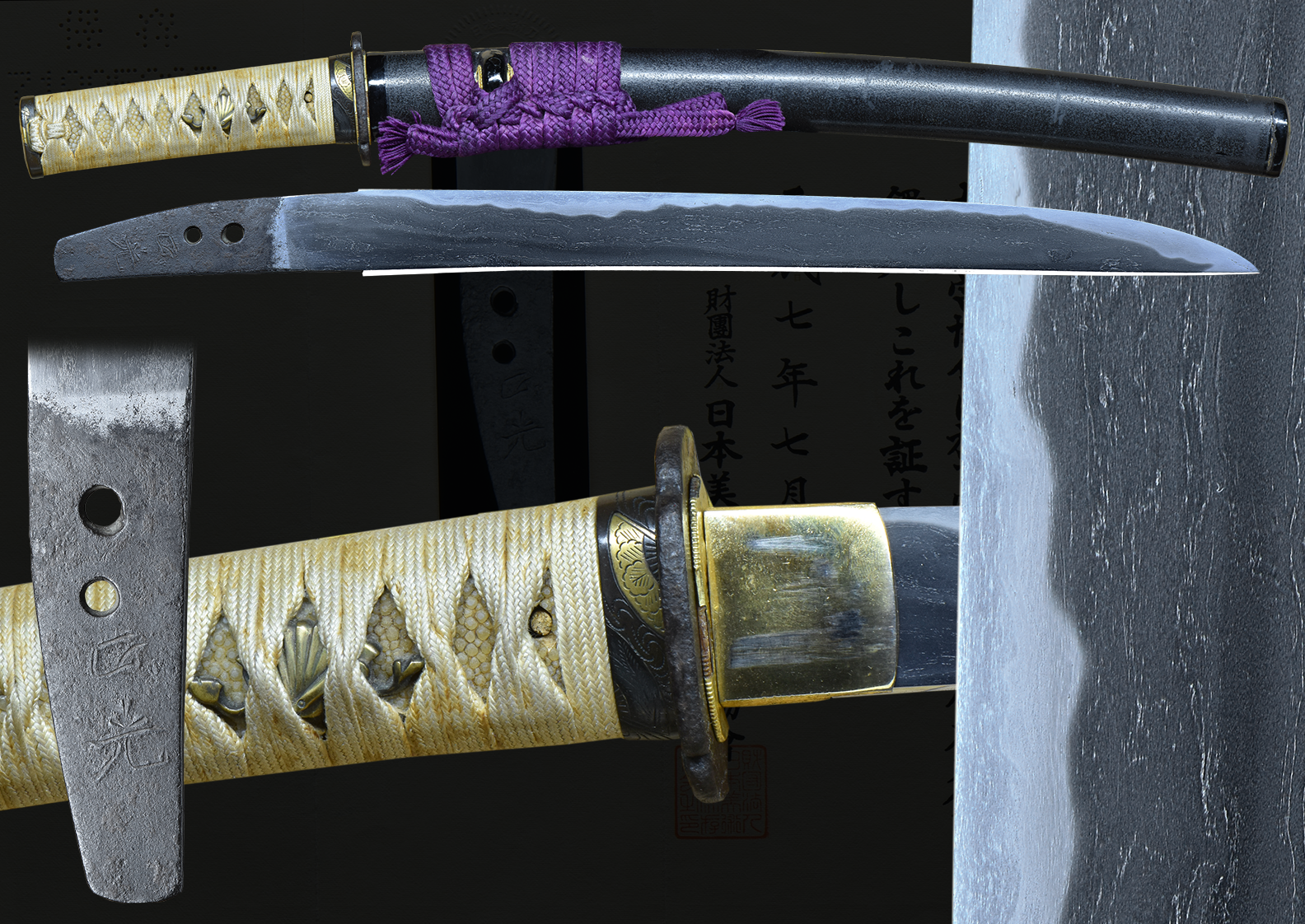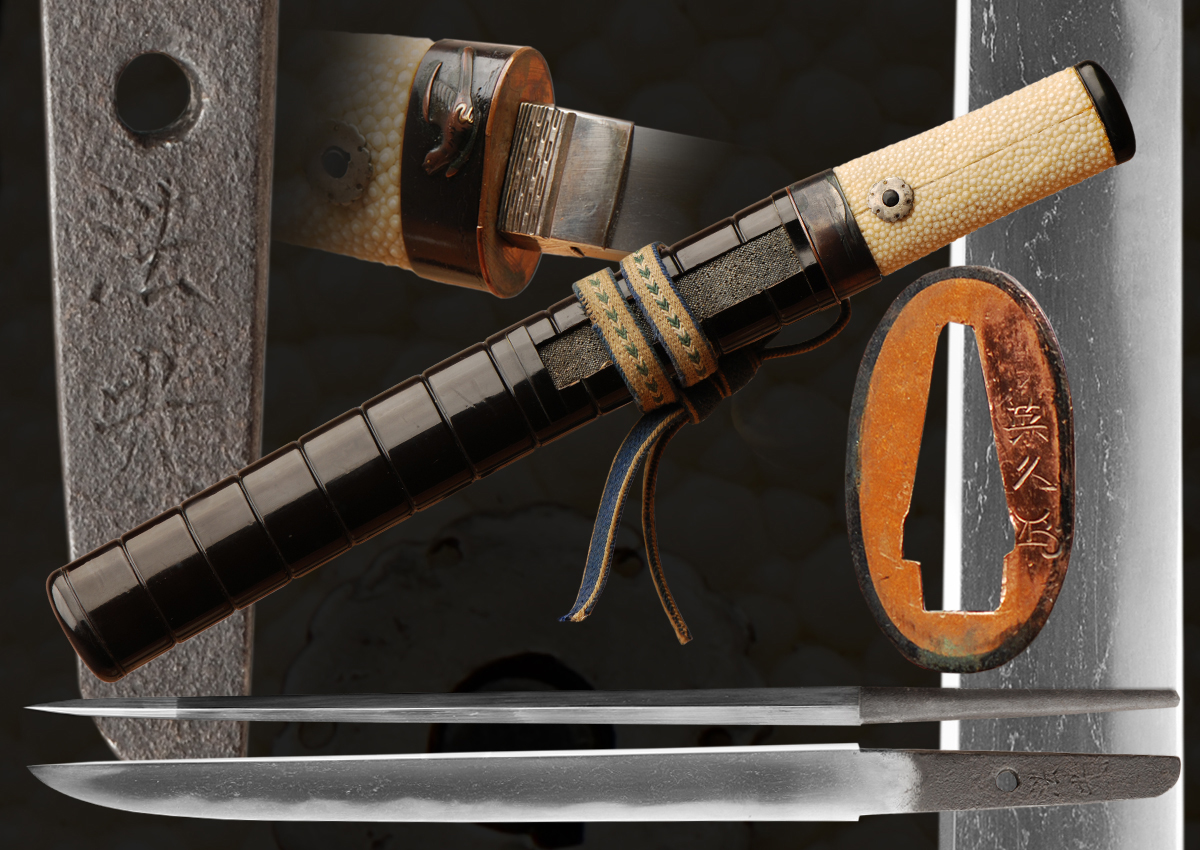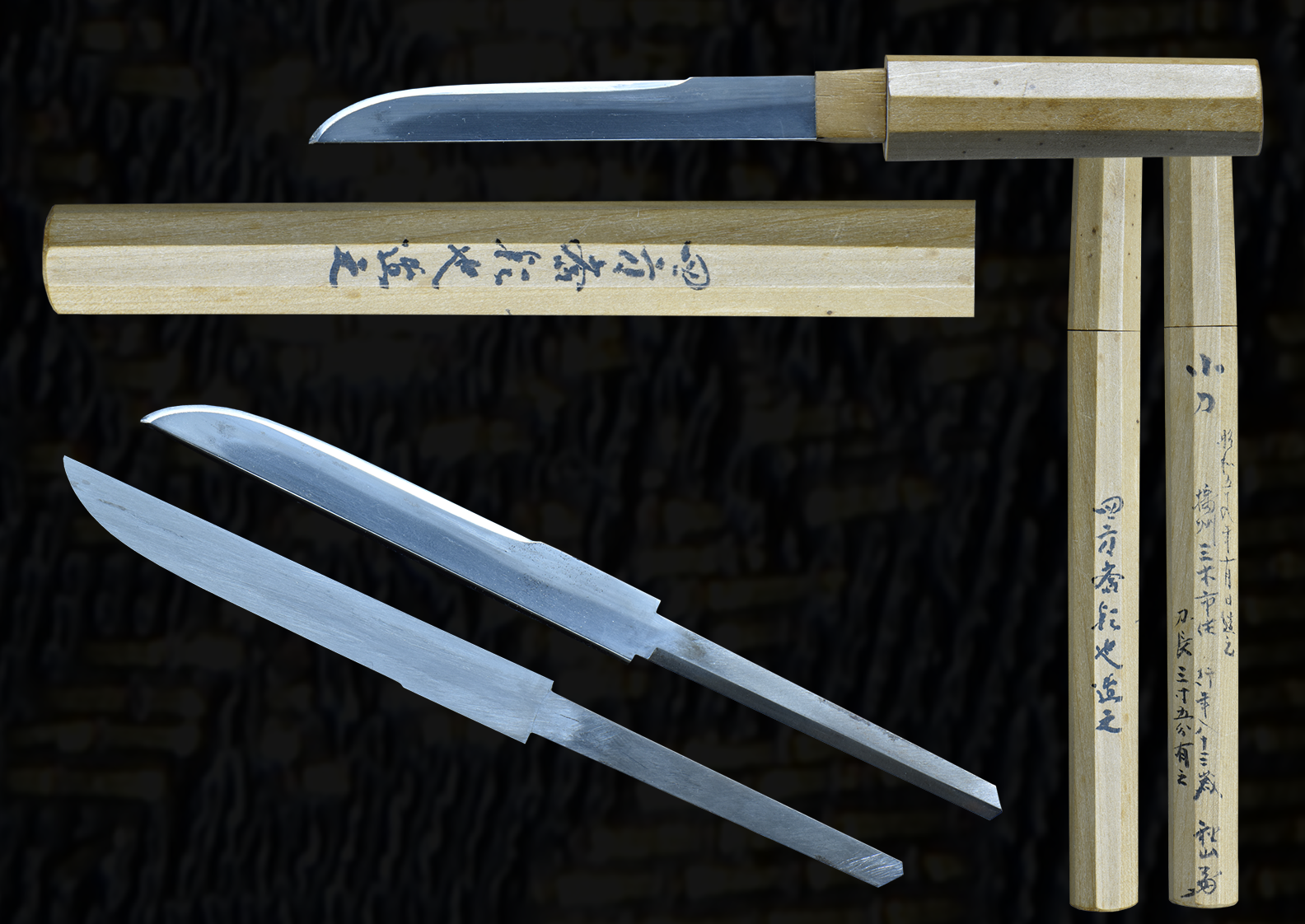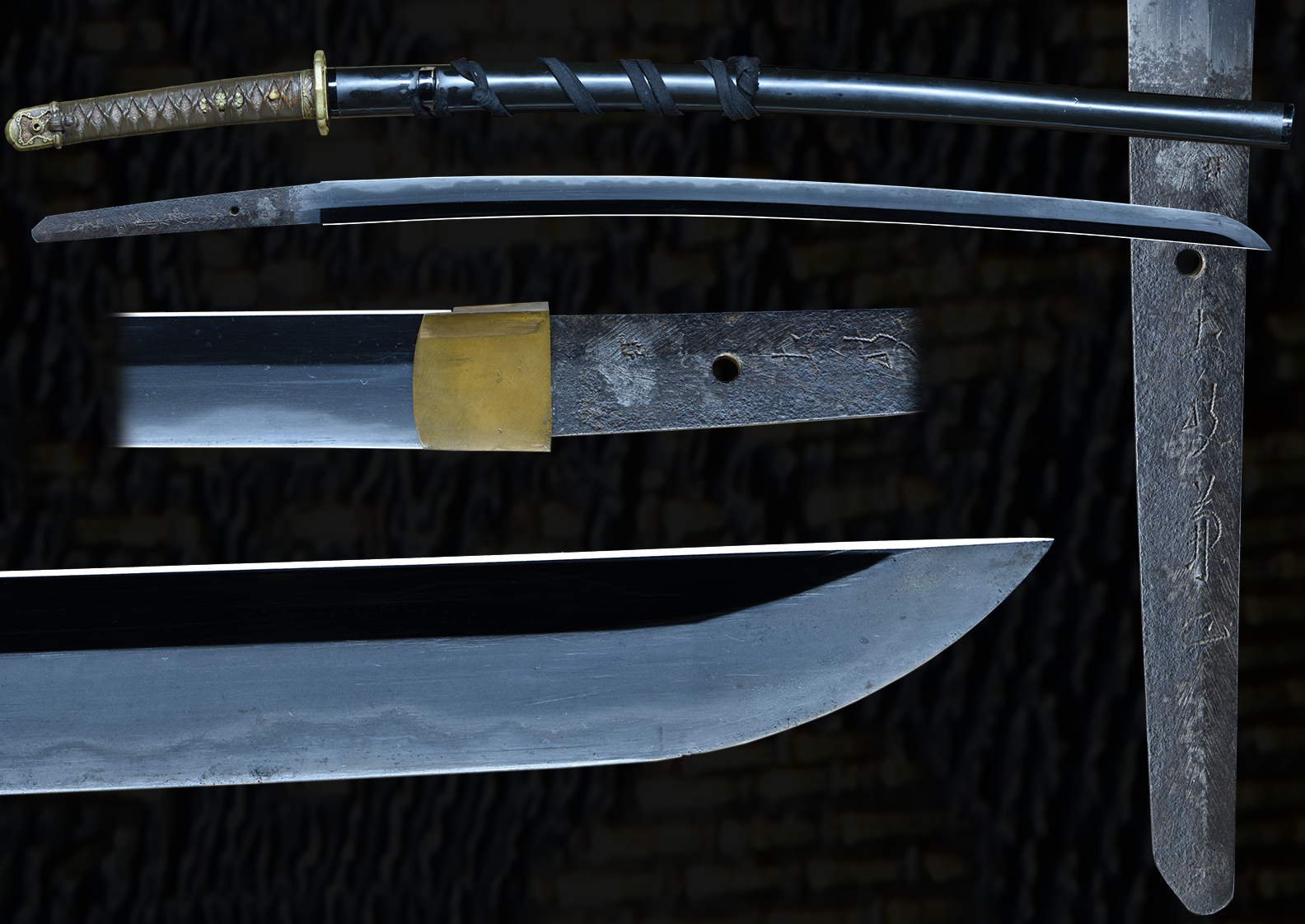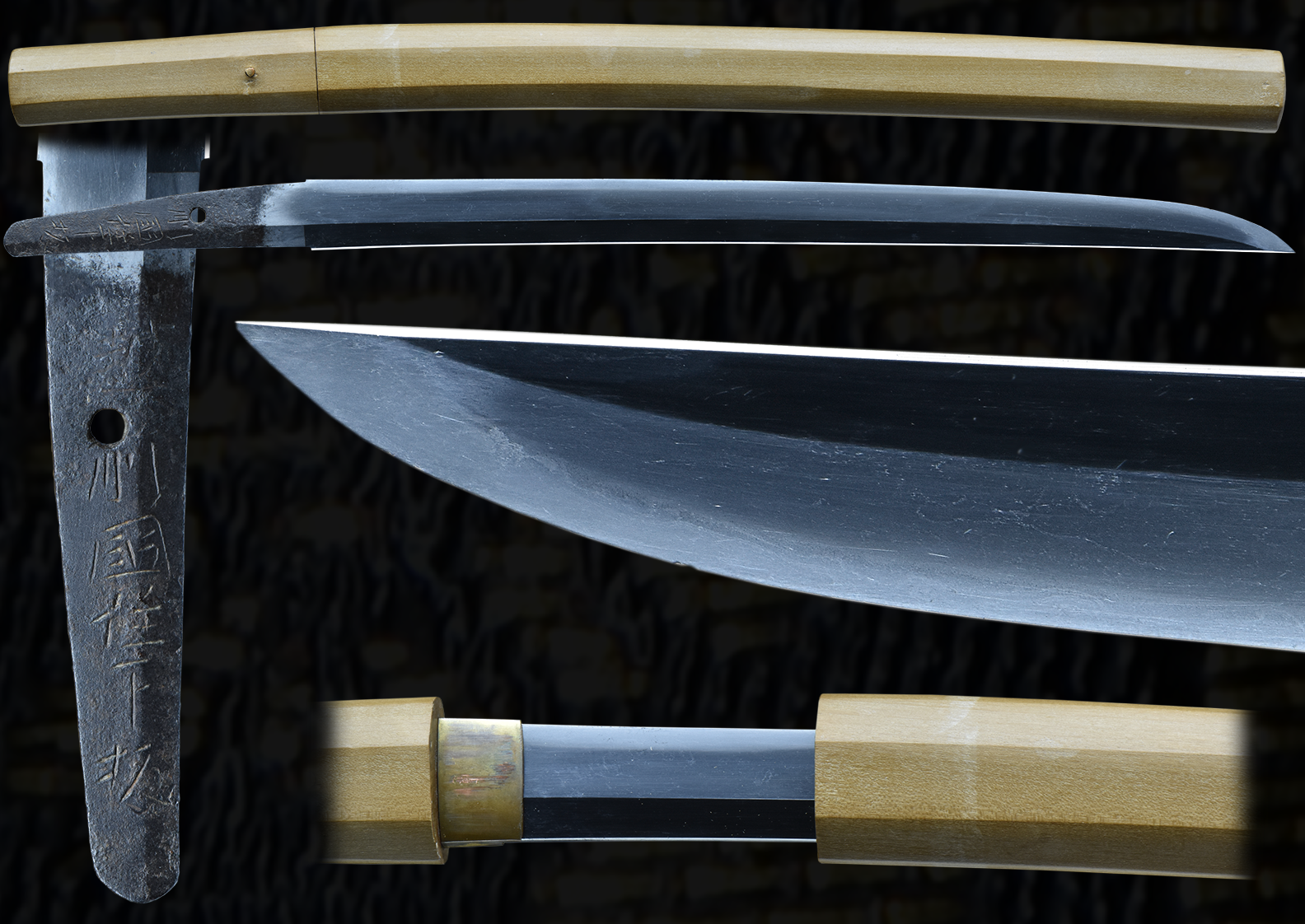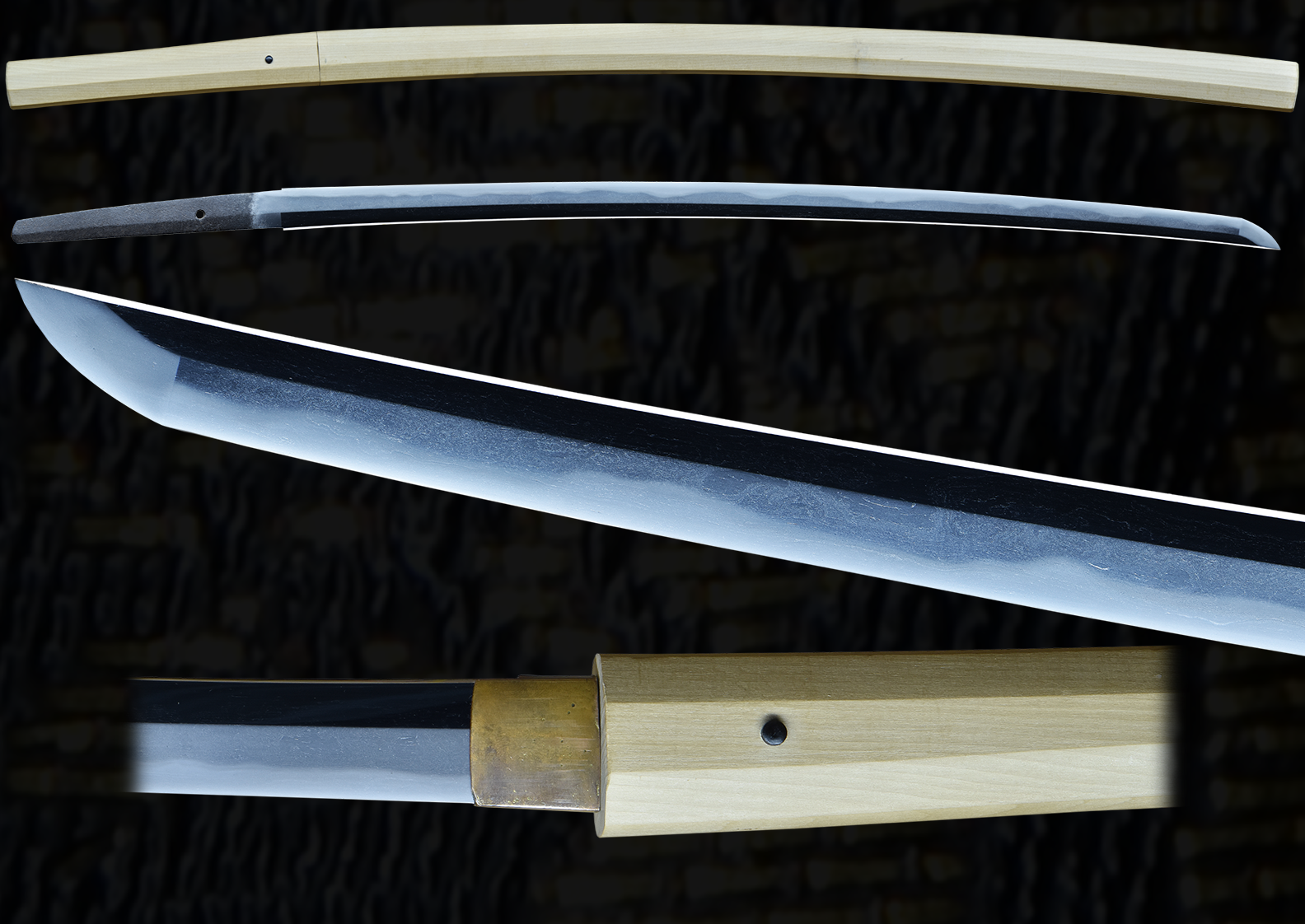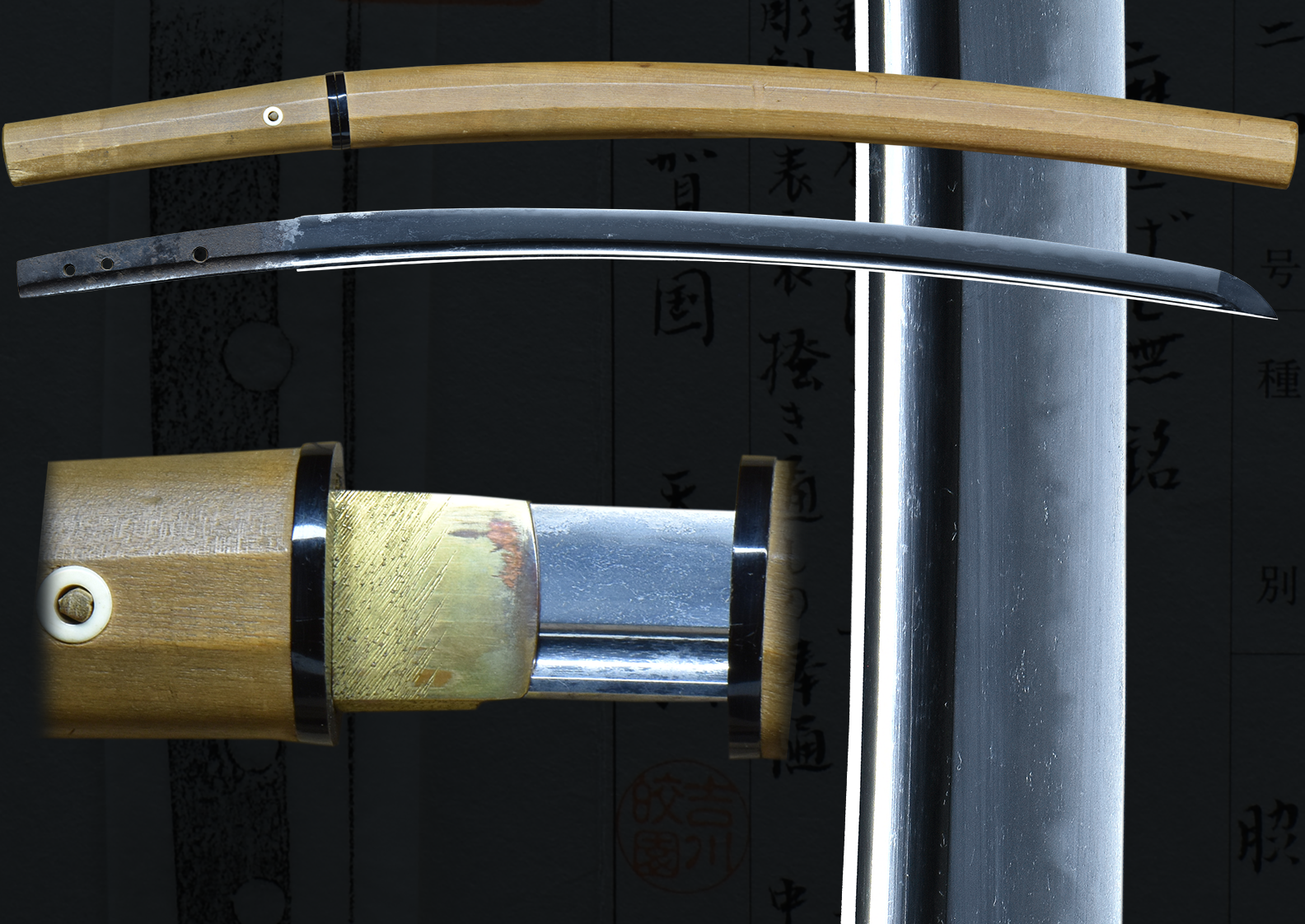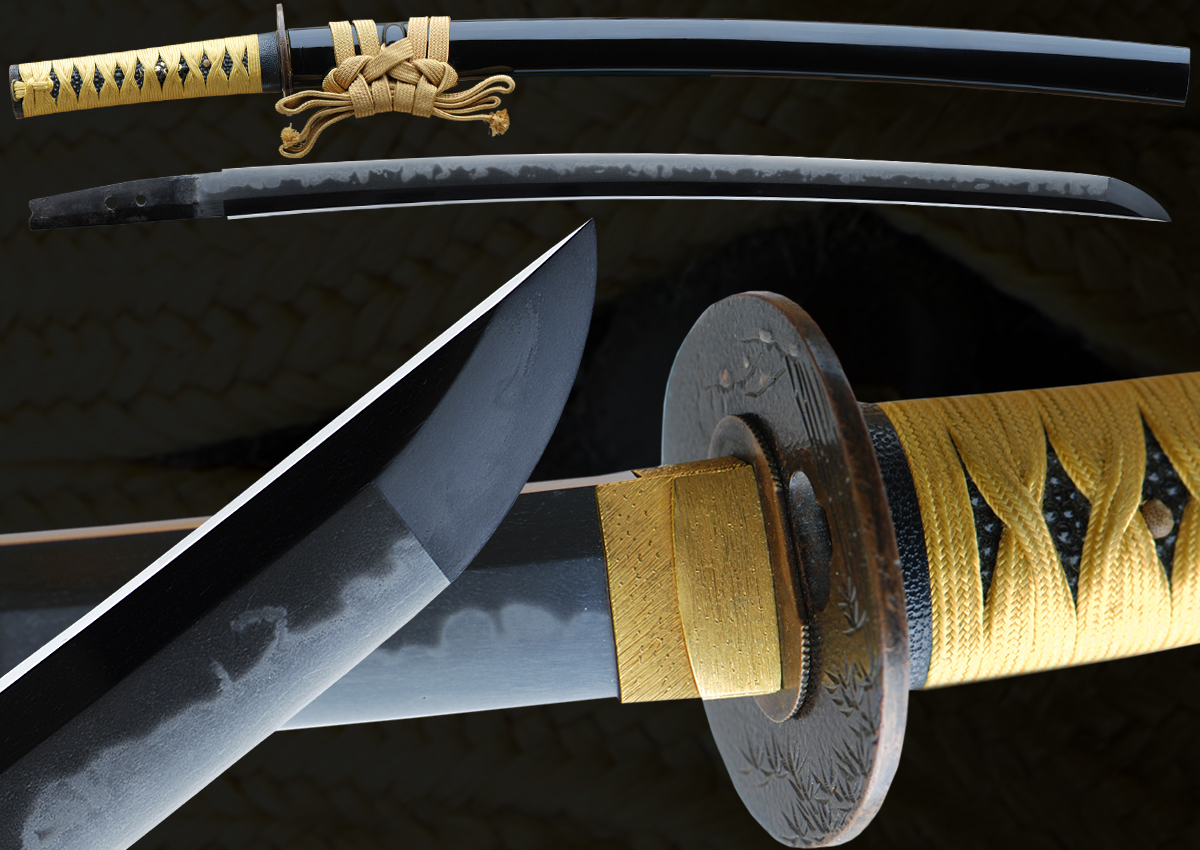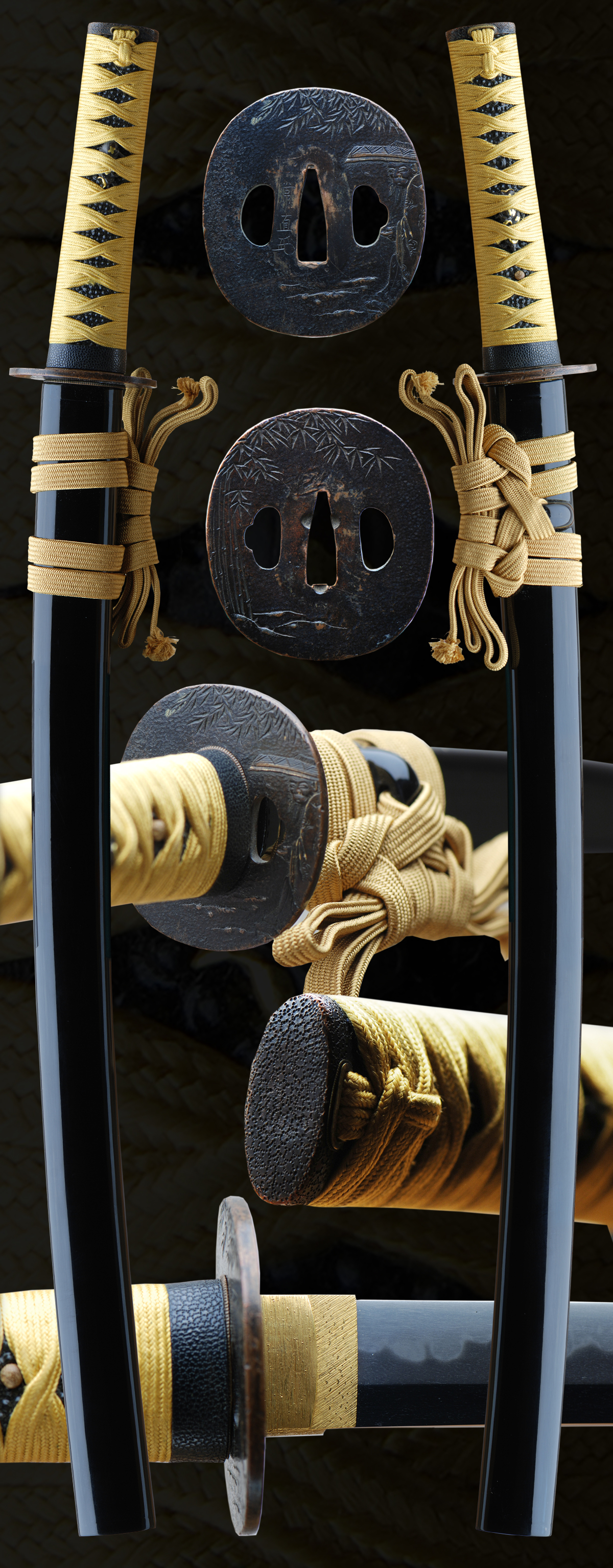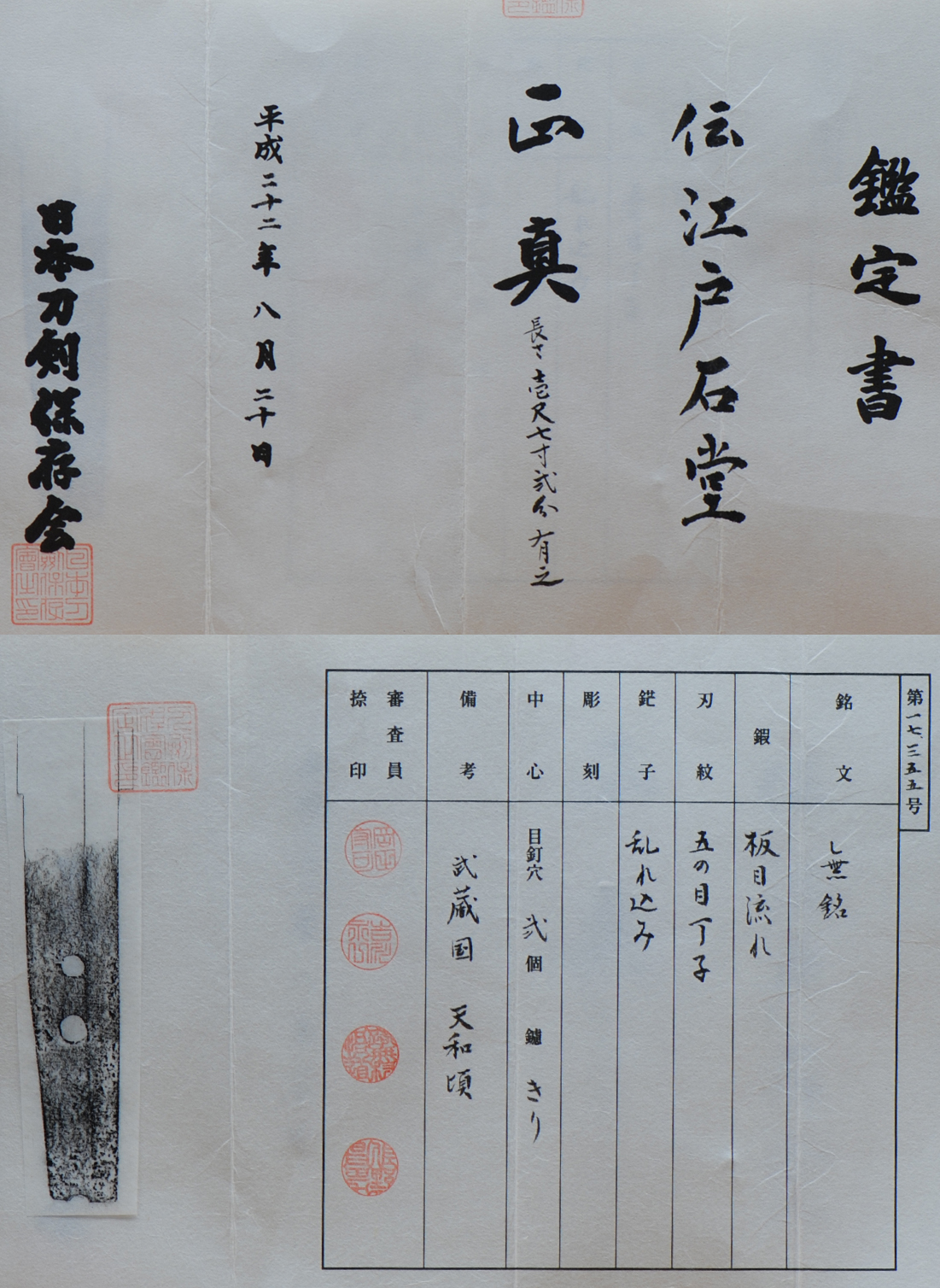Item description:
When first viewing this blade you can see a resemblance of an Ichimonji blade. Fine utsuri covers the blade as well as Ji-nie. The chiji midare is very active and it appears as flames dancing along the blade. There is tobyaki and yubashiri causing a hitatsura like hamon. The hada is a finely worked itame. An exquisite blade and one that never tires of viewing.
The koshirae is a high gloss black lacquer with a gloss black lacquered Same(rayskin). The tsuka-ito and sageo are a matching gold in color. the tsuba is of a scenic nature. The menuki are of shakudo and gold and the fuchi/kashira are of a geometric design. A beautiful gilded 2-piece habaki was made for this sword to create a great package and wonderful piece. The stub is also signed.
The Ishido Kei had its foundations in Omi Province. Omi Province was the home of many well-known smiths from the late Kamakura period into the Nanbokucho period. Some of the more famous smiths were Takagi Sadamune (高木貞宗) and Kanro Toshinaga. They had many descendants but very few of their works survived so that by the time the Tokugawa period began, there were not many of these descendants left in this province. Around the Meio Era (1492), many of the Osafune-kaji from Bizen came to Omi and made swords thus breathing new life into this area. Among these was Sukenaga (助長) who moved to this area and is said to have founded the Ishido Kei. During the early years of the Edo period during the Kanei Era (1624-1644), the various groups of smiths who made up the Ishido Kei (石堂系) left Omi and split into three groups. These three groups moved to Edo (Musashi Province), Wakayama (Kii Province), and Fukuoka (Chikuzen Province). These three groups prospered in their new areas throughout the Shinto period.
- Mei: Mumei
- Date: Edo (1600’s-1700’s)
- Nagasa: 20-1/2 inches
- Sori: 17.0 mm
- Width at the ha-machi: 29.9 mm
- Width at the yokote: 22.6 mm
- Thickness at the mune-machi: 7.5 mm
- Construction: Shinogi zukuri
- Mune: Iori
- Nakago: Ubu
- Kitae: Itame/mokume
- Hamon: Gunome Choji
- Boshi: Maru
- Condition: Good polish
Click to Enlarge Image
Ishido school information:
The Ishido history is complex but in the Edo period leading up to the Meiji restoration the blacksmiths using the
professional name of Ishido were sword makers. Beginning with the Meiji they turned to the production of kanna blades and various edged tools. The head of the clan at that time of the restoration was the sword blacksmith know as Ishido Unjusai
Korekazu. Soon two other blacksmith family names will merge with the Ishido history, they are the Kato and Seiichi famlies.
Ishido Unjusai Korekazu was indeed an actual sword smith, and it is documented that he was the 7th generation to make
swords. It is now understood that Ishido Unjusai Korekazu was the father of a daughter but no son. Another sword smith who’s
family name was Kato but used the professional name of Chounsai Tsunatoshi (father of Chiyozuru Korehide) had a brother by
the name of Kato Toshinaga. Kato Toshinaga married the daughter of Ishido and and thereby legally adopted the Ishido family
name and became known as Ishido Toshinaga, but used the professional name of Ishido Korekazu. There is evidence that
earlier in the Edo period a marriage union between the Ishido & Kato clans took place. Ishido Toshinaga was the first Ishido to
make kanna blades as a tradesman, up until that point only swords were made by the Ishido clan.
About this same time, the 1850-60s, the head of the Kato clan, Kato Chounsai Tsunatoshi had two sons, the younger son, who’s
name was Kato Hiroshi was later to use the professional name of Chiyozuru Korehide. Chiyozuru created his own name and
dropped the Kato name and therefore became an independent blacksmith on his own and set up his own shop at a early age.
At the time of Korekazu’s death in 1891, his son the talented Hidekazu, rightfully took over the family business. The Ishido name
became prominent in the tool trades and there is a good chance that Ishido Hidekazu and Chiyozuru worked closely and helped
to encourage each others knowledge and skills. It is known and recorded that Hidekazu had two sons who where both
blacksmiths and it was assumed that one of them would have taken up the family trade and the continuation of the Ishido name
at some point. As fate would have, tragedy struck the family thrice. The first son was lost unexpectedly, possibly in an accident,
and the second son died tragically soon after. During this late period in Hidekazu’s life he also lost his wife. With the burden of all
these losses it is reported that alcoholism and depression befell the master. Thankfully Hidekazu’s cousin, Chiyozuru Korehide
stepped into manage the Ishido business for the few years that Hidekazu was suffering.
(shipping and insurance included)
Email us if your interested in this item and remember to include the order number for this item: fss-812.
Click to Enlarge Image
Click to Enlarge Image
For Sale
